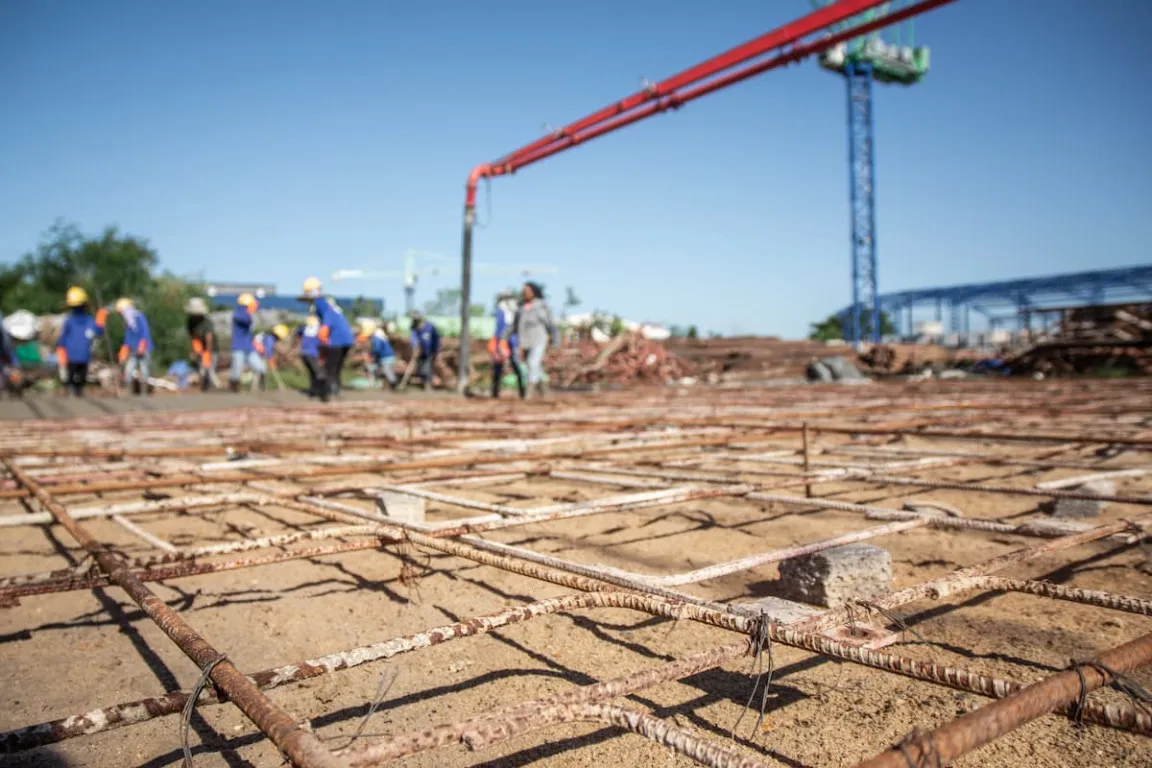Before starting a construction project, it is important to be familiar with the building structure and choose the most suitable foundation design. Of the many design options that exist, one foundation that can withstand the weight of a building well is a raft foundation.
Although it offers a lot of advantages, a raft foundation also has some disadvantages that need to be considered. So, what is a raft foundation, and what are its characteristics? To understand more, check out the following discussion!
What Is a Raft Foundation?
A raft foundation is a type of basic structure in the form of a reinforced concrete slab designed to be an assembly. The function of the raft foundation is to distribute the building weight equally into the soil layer through a sturdy concrete slab.
The raft foundation is in the form of a very wide, giant plate with a certain thickness and has a large volume. With high strength and stability, raft foundations are often used in construction projects that require high bearing capacity.
Some applications of raft foundations include multi-storey buildings, houses with 1–2 floors, buildings that require basements, and buildings to support large company tanks.
Please note, raft foundations can only be used to support buildings with a maximum of 10 floors. In addition, this type can also be combined with deep foundations by adding bored piles to the bottom of the raft foundation.
Types of Raft Foundations
Raft foundations are divided into several types based on the structural design used. The types of raft foundations include:
1. Flat Plate Mat
A flat plate mat is the simplest type of raft foundation. This type is arranged by concrete slabs with a uniform thickness level. Flat plate mat is generally applied to buildings with light structural loads, such as residential houses with 1–2 floors.
2. Plate Thickened Under Columns
A plate thickened under columns is a raft foundation that is made thicker at the bottom of its columns to increase the strength of the building structure. This aims to protect the plate from negative moments and diagonal tension due to high loads.
3. Two-Way Beam and Slab
Two-way beam and slab is often used in areas with soil types that can experience subsidence. The reason is that the two-way system in this type can distribute the load evenly to the slab to minimize the risk of instability due to land subsidence.
4. Plate with Pedestal
The plate with a pedestal has a working principle that resembles a plate thickened under columns, which both have thickening under the column. The difference between them is in the aspect of the thickening shape, where the plate with pedestal is designed to resemble a protruding base.
5. Rigid Frame Mat
Rigid frame mat or box-type foundations are generally used in buildings that have very high structural loads. Rigid frame mat utilizes basement walls to form a rigid frame system so that it can withstand building weights.
6. Piled Raft
A piled raft is a combination of a raft foundation and a pile foundation. Generally, this type is used in high-rise buildings such as office buildings or apartments. A piled raft can be the right choice if the distance between pile caps is too close.
Read also: How to Calculate Foundation Volume Based on Its Type
Advantages of Raft Foundations
Of the various types of foundations that exist in the construction world, raft foundations offer a variety of significant advantages. The advantages of raft foundations include:
1. Can be Applied to Unstable Ground
Building construction on soft, uneven, or unstable ground certainly provides special challenges. In these conditions, raft foundations can distribute bearing pressure equally according to the level of ground instability that can be tolerated.
2. Can Adapt Well
When subsidence occurs, raft foundations can adapt well to prevent tilting and maintain building safety. This advantage makes raft foundations often used in the construction of large buildings in Indonesia.
3. Save Time and Cost
A raft foundation is a shallow type of foundation that does not require deep excavation. In addition, its manufacture does not require the help of heavy equipment. Therefore, compared to other types, this foundation is more time and cost-efficient.
4. Capable of Supporting Heavy Loads
Raft foundations have a good ability to support buildings with large loads. Not only that, raft foundations can also minimize damage to buildings because this type uses sturdy reinforced concrete and thick concrete slabs.
5. Resistant to Earthquakes
For buildings located in earthquake-prone areas, raft foundations can be the right choice. With a thick concrete slab construction, this foundation can help stabilize the entire building's weight and protect it from earthquake losses.
Disadvantages of Raft Foundations
Before using a raft foundation as the basic structure of a building, you need to consider its disadvantages. Here are some disadvantages of raft foundations:
1. Less Suitable for Some Soil Types
Some types of soil that are not suitable for raft foundations are muddy and rocky because both types of soil are difficult to flatten and stabilize. Therefore, before choosing the type of foundation, it is important to analyze the soil conditions to suit the base structure.
2. May Cause Drainage Problems
If not designed properly, raft foundations can cause drainage problems such as the appearance of puddles, which can damage the building structure. Therefore, planning a raft foundation must take a proper calculation of the drainage system.
3. Requires Complex Construction Techniques
Raft foundations require complex construction techniques, especially in the process of placing concrete slabs. To overcome this problem, the selection of skilled labor and appropriate construction calculations is important.
4. Prone to Erosion
Without proper maintenance, the edges of the raft foundation base may erode over a period of time. However, it can be overcome by taking proper maintenance so that the raft foundation can last in the long term.
Read also: Chicken Claw Foundation: A Crucial Structural Component
The Manufacture of Raft Foundations
The way to make a raft foundation is quite simple. The steps in making a raft foundation are as follows:
- Make sure that the excavation elevation follows the minimum CBR value requirement of 50%.
- If it is not appropriate, make soil adjustments until the CBR value is reached.
- Excavate the soil in a predetermined area.
- Make the working floor using a cement mixture according to specifications.
- Make formwork by installing concrete blocks, bricks, and lightweight bricks.
- Install reinforcements for the bottom and top layers of the concrete slab.
- Install vertical reinforcement for columns and basement walls.
- Spray termite repellent if necessary.
- Check the quality of the installed reinforcement.
- Do the casting. If the project area is large enough, cast the foundation in a step-by-step manner.
That is all the explanation of the definition, types, how to make, the advantages, and disadvantages of raft foundations. This basic structure has various advantages that can be utilized in construction projects, such as high strength and flexibility.
In working on a construction project, there are several important aspects that need to be considered, such as building design ideas, the type of foundation used, and the selection of building materials. When it comes to building materials, one of the most crucial components is cement.
In order for the building to stay strong, more durable, and require less maintenance, Semen Merah Putih Watershield is one solution that should be considered. This cement is a super premium multipurpose cement that comes with various advantages over ordinary cement.
With its water repellent technology, Semen Merah Putih Watershield can provide triple protection to buildings. This protection can prevent the building from 3 sources of seepage, namely outside, inside, and from the ground.
Not only that, Semen Merah Putih Watershield can be applied in various building applications such as foundations, concrete blocks, castings, masonry, plastering, and skim coat. Therefore, this cement is a multifunctional solution for various construction needs.
For the best construction solutions, don't hesitate to contact us now! We are ready to present premium products and services from Semen Merah Putih and help you get the best and most suitable products for your needs!
Read also: Foundation for A 2-Story House: Types & Key Influencing Factors



